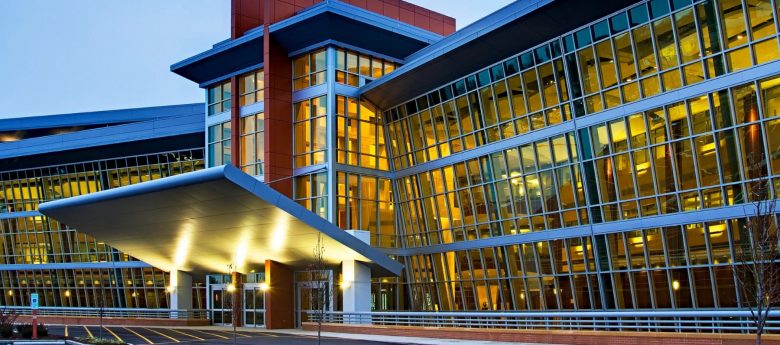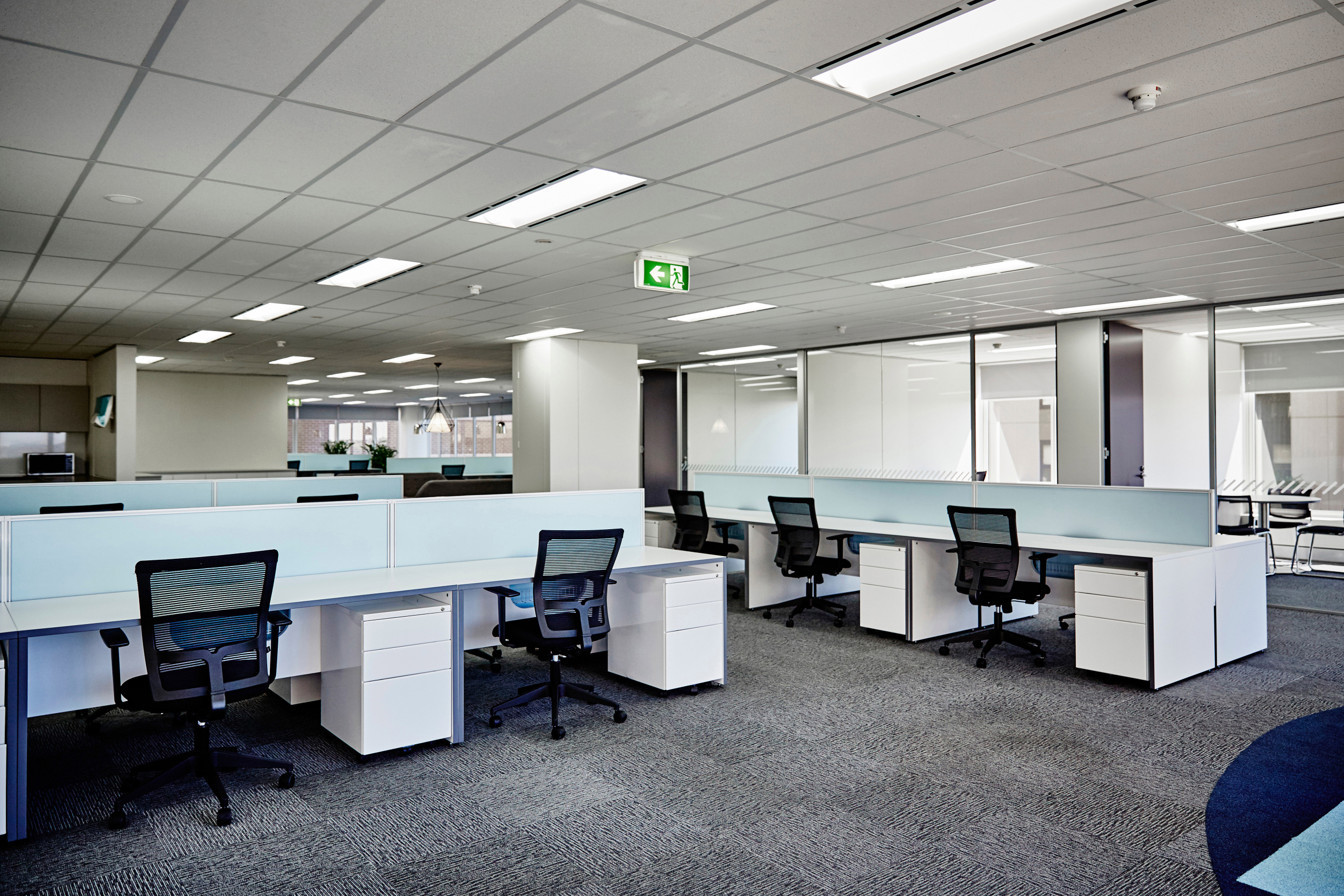Fixtures Provide Hospital With COVID Disinfection
With commercial facilities taking precautions against Covid-19 as never before, an effective new tool in their arsenal is a new type of “germicidal” LED fixture. This specialized LED fixture draws in air and irradiates it with UV light. Union Health, an integrated health system in Indiana, installed 48 of the UVC LED light fixtures developed by Energy Harness last year at its facilities.

With commercial facilities taking precautions against Covid-19 as never before, an effective new tool in their arsenal is a new type of “germicidal” LED fixture. This specialized, enclosed LED fixture draws in air and irradiates it with ultraviolet light (UV), significantly improving indoor safety by providing continuous airborne disinfection of the SARS-CoV-2 (COVID-19) virus as well as other airborne viruses, bacteria, and germs. While traditional UV fixtures have been used for many years to clean surfaces, they could not be safely used in occupied spaces. The new type is designed to disinfect indoor air safely and constantly in occupied rooms.
Although LED light fixtures normally emit non-harmful, visible light with a 400 nm -700 nm wavelength, lower frequency ultraviolet (UV) light LEDs can effectively kill such pathogens. UVC, a very powerful ultraviolet light wavelength between 180 nm-280 nm, is viricidal, bactericidal, and fungicidal since it passes through the outer wall of the pathogen and causes damage at the molecular level. The destruction ultimately leads to inactivation of the pathogen, making the cells unable to reproduce. Also, unlike vaccines, because UV works at the cellular level, it is effective regardless of the pathogen’s ability to adapt or mutate.
UVC is known to disinfect air, water, and nonporous surfaces and has effectively been used for decades to reduce the spread of bacteria such as tuberculosis, influenza and Legionnaire’s disease. According to the CDC, UVC is the only recognized technology for effective germicidal treatment for airborne pathogens.
Today, as the nation continues to battle the pandemic, UVC is a promising tool at the forefront of safely reopening a host of commercial spaces because the approach is effective in inactivating the SARS-CoV-2 virus that causes the Coronavirus Disease 2019 (COVID-19).
The CDC has determined that the integration of in-room UVC sources in conjunction with building-wide HVAC systems has great promise, particularly given the growing knowledge of the dangers of airborne spread of the coronavirus. Best of all, these stand-alone UVC fixtures can be used continuously throughout the day, in occupied rooms, even when the HVAC system is off.
In indoor settings, one of the best ways to combat the COVID SARS-2 family of airborne viruses is to continuously recycle individual room air while safely treating it with UVC radiation. Unlike traditional wide spectrum fluorescent or mercury vapor UV tubes, LEDs can produce UVC by controlling the specific wavelengths of light emitted. In addition, they do not contain extremely toxic substances like arsenic or mercury that are inherent in the traditional UV tubes.
However, to do this requires technology that can safely deliver the proper UVC dosage in a specific combination of three main factors – dosage, distance, and wavelength.
Ultimately, germicidal efficacy of ultraviolet light is based on dosage, distance, and wavelength. Dosage is a function of UVC power multiplied by exposure time. Distance is the proximity of the pathogen to the UVC source. And wavelength is the nanometer range of the ultraviolet light.
To eradicate pathogens effectively, the UVC wavelength should be in the germicidal effective range, with a peak of approximately 268 nm. The intensity must be high enough to irradiate the space, and the duration must be long enough to affect the organism. The equation is (Wavelength Intensity * Duration) = Dosage Delivered.
After significant R&D, an industry innovator in the LED sector, Energy Harness Corporation, a Florida-based designer and manufacturer of LED lighting for a variety of commercial settings, developed a ceiling mounted UVC system called Active-Airflow that circulates room air many times per hour into an enclosed chamber, where UVC disinfection occurs.
Due to its unique design, the unit allows for an exceptionally long exposure time. The internal germicidal chambers are filled with hundreds of high-powered LEDs arranged in very close proximity to the airborne pathogens as they move through the fixture.
With the intensity, the distance and the time measured, the manufacturer can effectively “control” the UVC dosage. In addition, the LEDs in the unit irradiate in the most effective germicidal range (with a 260-280nm wavelength).
When the LED fixture was tested by Intertek Laboratories (ETL), a nationally recognized testing laboratory (NRTL), it was shown to be 99.9% effective in eliminating airborne pathogens. Further laboratory testing directly on the SARS-CoV-2 virus has shown the LED technology produced in the fixture showed a 99.998% inactivation of the virus – within one second. A virus reduction rate of 99.999% is the maximum sensitivity that the testing mechanism could measure. Maxing out the equipment during this testing indicates an authentic COVID killing capability.
Because the unit houses the UVC LEDs internally, it does not produce any visible light in the room it disinfects. With the unit mounted in the ceiling, the people occupying the space are completely shielded from the UVC. Each LED fixture can typically disinfect a 256 sq. ft. area, depending on average occupancy, occupant activity level, etc., and multiple units can be deployed in larger rooms.
When installed in standard ceiling grids, the pathogen inactivating UVC LED fixture can be used continuously through the day in occupied rooms, which enables constant airborne disinfection of the air throughout the area.

The unit is UL and CSA certified by Intertek Testing Laboratories (ETL) and is manufactured in an EPA registered facility in Florida. It has also been certified by ETL to produce no harmful ozone and is registered with the California Air Resources Board (CARB).
To help mitigate the spread of viruses like COVID-19, Union Health, an integrated health system in Indiana, installed 48 of the UVC LED light fixtures last year at its facilities, primarily at entry points, waiting areas, and testing areas. This year Union Health is installing a second round of fixtures.
“Union Hospital has had a relationship with Energy Harness for approximately five years now and I was made aware of the Active Airflow technology,” said Mike Mullins, System Director of Facilities, Union Health System. “Obviously with COVID-19 we were for looking different ways to protect both our visitors, our patients and our staff so after in-depth research we were happy to move forward with the purchase and the installation of these devices.”
“The most important thing about the UV technology is the exposure to the light, so one of the things that attracted me the most to the Active Airflow technology is the fact that the unit in the ceiling pulls the air from the room to the device and past the UV lighting, so it has the time frame exposure to the UV light to kill the viruses and the bacteria,” he added.
He noted, “We were really concentrating on entry points to all of our facilities and also the testing areas, so waiting areas and testing areas are our primary locations for the UV-C lights.”
Another advantage of using such a UVC LED fixture is that the unit works independently from the HVAC system, but still uses active air handling to draw room air into the unit. The standalone approach of the disinfection system could make it simpler for most facilities to install. The unit is designed to fit into a grid ceiling much like a troffer luminaire and takes up the same space as a single two by four-foot ceiling tile.
Although the primary focus of the UVC LED fixture is on safety and the continuous disinfection of airborne viruses, aesthetically pleasing architectural designs are also being developed to complement a variety of interiors in commercial facilities.
While public facilities like office buildings and retailers are slowly opening up under pandemic restrictions, the incorporation of fixtures that can continuously kill airborne pathogens – including the COVID-19 virus – while occupants are in the room will be vital to aid safe reopening.

